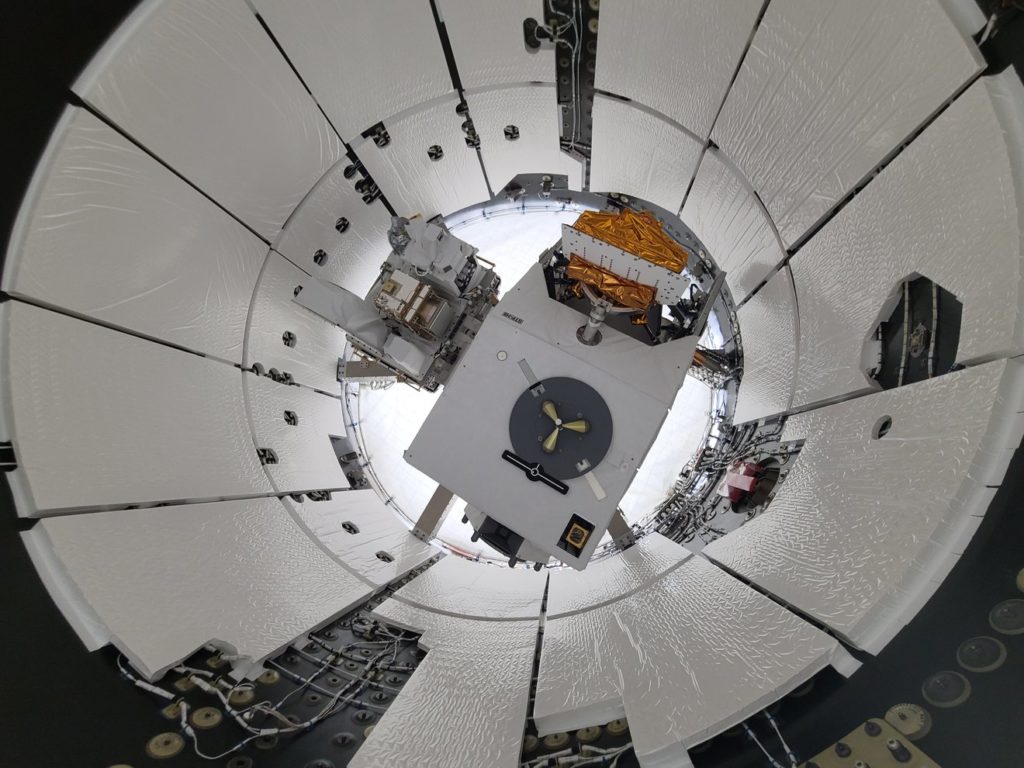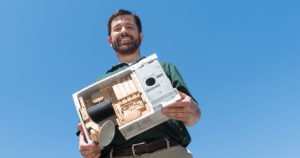
Not long after ending a successful three-year mission, an identical tiny satellite sensor developed by researchers at Colorado State University and NASA’s Jet Propulsion Laboratory (JPL) is back in orbit – and scientists are optimistic about the observations it will produce.
About half the size of a cereal box, the “small but mighty” sensor equipped with novel remote-sensing technologies could be a game-changer for weather forecasting, according to a release from NASA’s JPL.
SpaceX launched the sensor known as TEMPEST-D2 (Temporal Experiment for Storms and Tropical Systems – Demonstration #2) to the International Space Station as part of a Space Force mission called Space Test Program-Houston 8, or STP-H8. The recently launched sensor is a copy of the original TEMPEST-D that orbited for three years and first demonstrated the ability to collect cutting-edge, multi-frequency global weather data from a dictionary-sized satellite.
The TEMPEST-D2 sensor, produced alongside the first one, is a technology demonstration to show the feasibility of smaller, low-cost, low-power satellite systems like TEMPEST-D for gathering critical data for weather prediction.
Promise of TEMPEST-D

During its three-year mission in low-Earth orbit, TEMPEST-D proved its potential to keep pace with larger, more expensive satellites currently used for weather forecasting. The compact instrument collected scientifically useful global data and exquisite weather images of multiple hurricanes and typhoons.
Steven Reising, professor of Electrical and Computer Engineering, led the successful, ground-breaking mission, with co-investigators Professors V. Chandrasekar, electrical and computer engineering, and Christian Kummerow, atmospheric science. They worked in partnership with JPL, Blue Canyon Technologies and NASA Wallops Flight Facility.
Six months after deorbiting, scientists are still counting on TEMPEST-D.
When the U.S. Department of Defense turned to Reising’s collaborators at JPL looking for new technologies to improve weather forecasting and environmental monitoring, they reached for the second TEMPEST-D sensor created in case of problems with the original instrument.
Now, the second TEMPEST-D is in space as part of the STP-H8 mission. Only this time, it is operating on the International Space Station alongside another sensor no bigger than a mini fridge called the Compact Ocean Wind Vector Radiometer, or COWVR.
Synergistic duo
Together, the two instruments are working to prove their worth – and to pave the way for a new generation of weather forecasting.
TEMPEST-D2 primarily measures precipitation and atmospheric moisture, while COWVR senses the speed and direction of wind at the ocean surface. The synergy between the cutting-edge instruments is set to expand our understanding of the atmosphere and ocean and their interactions in the Earth system.
“If COWVR and TEMPEST perform well, they’ll prove that comprehensive data vital to weather forecasting and a better understanding of climate can be obtained in a much smaller package with a much smaller price tag than previously thought,” the agency said last month in a release.
The sophisticated pair will circle our planet in low-Earth orbit about 16 times per day for the next three years. While both sensors are designed for use on small satellites, the International Space Station is enabling this mission to deliver data back to Earth faster than previously possible. They are using NASA’s tracking and data relay satellite – the system used by astronauts to enable constant communication with ground facilities – to help scientists monitor storms in near real-time.
Reising, who embarked on a new NASA-funded project to take his leading-edge research a step further, is optimistic that TEMPEST-D2 will perform as planned.
“We gained confidence from the success of TEMPEST-D, and couldn’t be happier to be back in space,” said Reising. “We expect this mission to help usher in the previously unimaginable: innovative constellations of small satellites for Earth remote sensing.”
Stalwart mission team
CSU alumni are also contributing to the STP-H8 mission through their roles with JPL. Dr. Sharmila Padmanabhan, staff engineer, played a leading role in the development of the TEMPEST-D sensor, and Dr. Joe Turk, radar scientist, is examining the capability of COWVR and TEMPEST-D2 for precipitation estimation. Padmanabhan and Turk launched their careers in remote sensing under the guidance of Reising and Chandrasekar as well as ECE Emeritus Professor Viswanathan Bringi.
“The COWVR/TEMPEST duo will be orbiting at the same time that the NASA and Japanese Aerospace Exploration Agency Global Precipitation Measurement core satellite is operating,” said Turk. “This provides a unique opportunity to assess the capability of the instruments to contribute to more frequent satellite-based observations of global precipitation, to sustain and further improve global precipitation datasets widely used in the hydrometeorological community.”